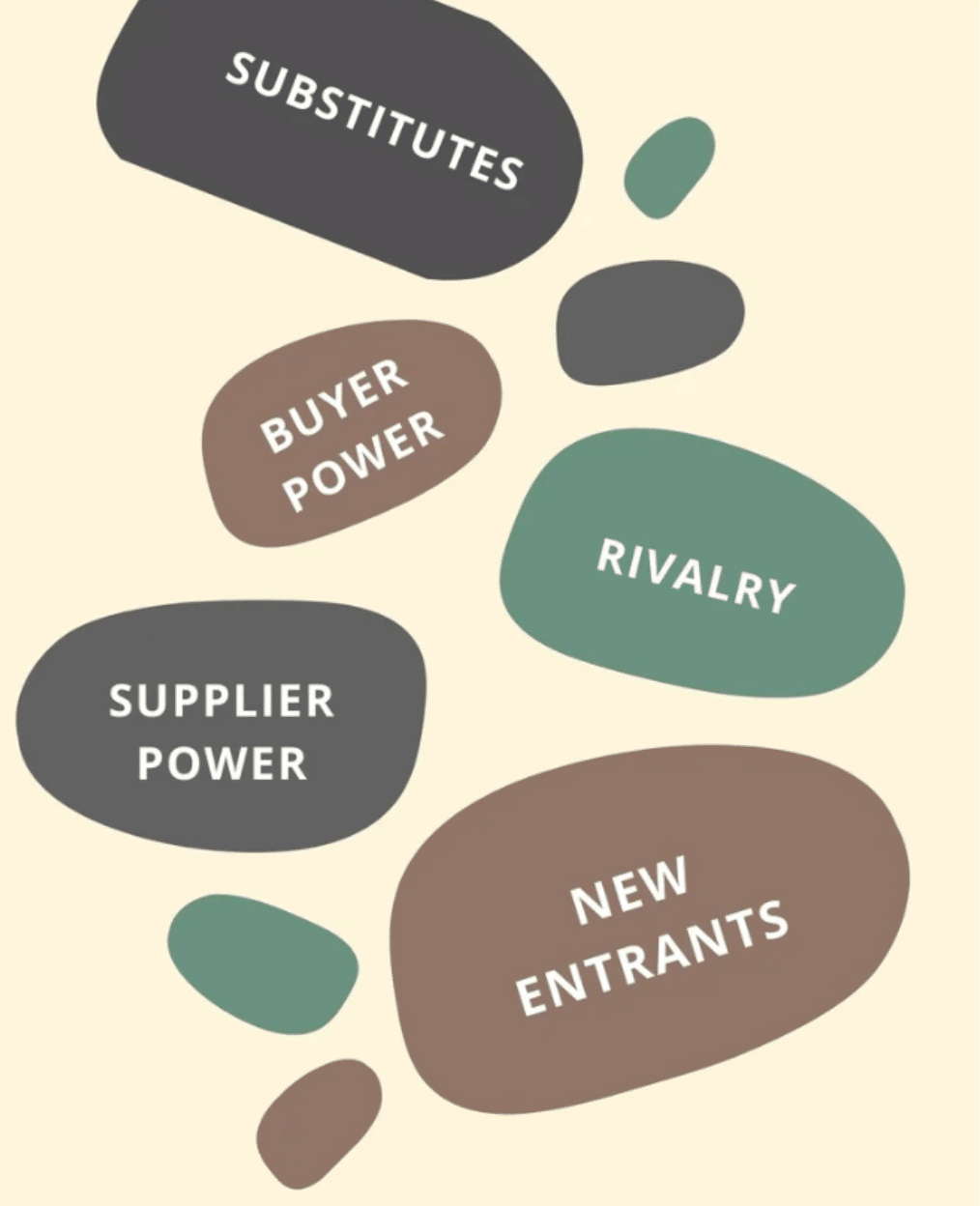Competitor analysis is a specific type of market research that focuses on understanding and analyzing the competition.
It involves looking at the strengths and weaknesses of competitors, as well as their strategies, products, and overall performance in the market. By conducting a competitive analysis, businesses can gain a better understanding of the market and develop strategies to improve their own performance and gain a competitive advantage.
In this blog post, we will explore the importance of competitor analysis in-depth and provide a step-by-step guide on how to conduct it.
Why is competitor analysis important?
Understand the market
By analyzing your competitors, you gain insight into the overall market and industry trends. This information can help you identify opportunities and understand the needs of your target audience.
For example, if you notice that all of your competitors are offering a specific product or service, it may be an indication that there is a high demand for it in the market.
On the other hand, if you notice that your competitors are struggling to attract customers, it could be an indication that the market is saturated or that there is a lack of demand for the products or services being offered.
Identify market opportunities
By studying your competitors, you can identify opportunities in the market that you may not have otherwise noticed. This can include gaps in the market for new products or services, untapped target markets, or new distribution channels.
Identify your strengths and weaknesses
By comparing your business to your competitors, you can identify areas where you excel and areas where you need to improve.
For example, if you notice that your competitors have a stronger online presence than you do, it could be an indication that you need to improve your digital marketing efforts.
On the other hand, if you notice that your competitors are charging higher prices than you are, it could be an indication that you need to re-evaluate your pricing strategy. This information can help you develop strategies to improve your business and gain a competitive advantage.
Develop strategies to differentiate yourself
By understanding your competitors, you can identify ways to differentiate yourself from the competition. This could be through pricing strategies, unique products or services, or a superior customer experience.
For example, if you notice that your competitors are all offering the same products or services, you could differentiate yourself by offering a wider range of products or services.
On the other hand, if you notice that your competitors are not providing a good customer experience, you could differentiate yourself by providing exceptional customer service.
Staying competitive
By monitoring your competitors, you can stay informed about changes in the market and adjust your strategy accordingly. This can help you to stay competitive and maintain or grow your market share.
When should you do a competitor analysis?
A competitor analysis should be conducted at various stages of a business. Here are a few examples of when conducting one may be beneficial:
- Before starting a business: Conducting a competitors analysis before starting a business can help entrepreneurs understand the market, identify opportunities, and develop strategies to differentiate themselves from their competitors.
- During the planning phase of a new product or service: Analyzing competitors can help a business identify gaps in the market and develop strategies to differentiate their new product or service.
- When launching a new marketing campaign: A competitor analysis can help a business understand how its competitors are positioning themselves in the market and develop a marketing campaign that stands out.
- During periods of growth or decline: Regularly conducting an analysis can help a business identify trends and patterns in the market and adjust its strategies accordingly. For example, if a business notices that its competitors are experiencing a decline in sales, it could be an indication that the market is changing and that the business needs to adapt its strategy.
- When introducing a new technology or innovation: A competitors analysis can help a business understand how its competitors are using new technologies or innovations and develop strategies to stay competitive.
It’s important to note that conducting this analysis is not a one-time task, it should be regularly conducted to stay updated with the market and the competition.
It’s also important to monitor the performance of competitors over time and adjust strategies as needed.
Steps to conduct a competitor analysis
1- Identify your competitors
So, how to do a competitor analysis?
Start by identifying who your main competitors are. This could be businesses that offer similar products or services or target the same audience.
It’s important to note that your competitors are not limited to businesses that operate in the same geographic location as you.
With the rise of e-commerce and online marketplaces, businesses now have the ability to reach customers from all over the world.
Therefore, it’s important to consider online competitors as well.
Here are a few ways to identify your competitors:
- Direct competitors: These are businesses that offer similar products or services to the same target market as you do. For example, if you are opening a clothing store, direct competitors would be other clothing stores in your area.
- Indirect competitors: These are businesses that offer products or services that can be used as a substitute for what you offer. For example, if you are opening a clothing store, indirect competitors could be online clothing retailers, department stores, or second-hand clothing stores.
- Online competitors: With the rise of e-commerce, online competitors should also be considered. These are businesses that sell similar products or services online and may target the same audience as you do.
- Potential competitors: These are businesses that could potentially enter your market and compete with you in the future. For example, if you are opening a clothing store, potential competitors could be businesses that are currently operating in a different geographic location but may expand to your area in the future.
Some helpful websites for this step are Crunchbase and Google Maps for local competition.
2- Analyze their website and online presence
Take a look at your competitors’ websites and social media accounts to understand their branding, messaging, and online presence.
For example, if you notice that your competitors have a strong social media presence, you may want to invest in social media marketing to increase your online visibility. Here a competitor social media analysis is very important.
Here are a few ways to analyze your competitors’ websites and online presence:
- Check their website design: Look at your competitors’ website design, paying attention to elements such as layout, color scheme, and overall aesthetic. Take note of how easy it is to navigate their site and how user-friendly it is.
- Analyze their content: Review the content on your competitors’ websites, including blog posts, product descriptions, and customer reviews. Look for patterns in their content, such as the topics they cover and the tone they use. Take note of how often they update their content.
- Check their social media presence: Look at your competitors’ social media accounts to see how active they are and how they are engaging with their followers. Take note of the type of content they are posting and how often they are posting it.
- Analyze their e-commerce platform: If your competitors have an e-commerce platform, take a look at the design of the platform, the checkout process, and shipping options.
By analyzing your competitors’ websites and online presence, you can gain a better understanding of their strengths and weaknesses and develop strategies to improve your own online presence and stand out in the market.
Remember to track your competitors’ websites and online presence over time and adapt your own strategies as needed.
Some helpful social media competitor analysis tools for this step are Unbox Social, BuzzSumo, and Owletter
3- Look at their pricing
Analyze your competitors’ pricing strategies to understand how they are positioning themselves in the market.
Look at the prices of their products or services and see if they are lower, higher, or similar to your own. Take note of any promotions or discounts that your competitors are offering.
This information can help you develop a pricing strategy that will be competitive in the market.
There are several ways to determine your competition’s prices:
- Visit their website: Many businesses list their prices on their website, so this can be a quick and easy way to gather information.
- Visit their store: If your competitors have a physical store, you can visit the store and take note of the prices of their products or services.
- Online marketplaces: Many businesses sell their products or services on online marketplaces such as Amazon or eBay, so checking these platforms can give you an idea of their prices.
- Price comparison websites: Websites such as PriceGrabber and Google Shopping allow you to compare prices of products or services from different businesses, this can help you to understand your competitors’ prices.
- Social Media: Many businesses post their prices on their social media platforms like Facebook, Instagram, and Twitter. This can be a useful way to find out about sales, promotions, and discounts.
- Surveys: You can conduct a survey to understand your customers’ shopping habits and the other options they consider when making a purchase. This can give you a good idea of the prices that your competition charges.
4- Study their marketing and advertising
Analyze your competitors’ marketing and advertising efforts. See what channels they are using to reach their target audience and what messages they are using to appeal to them. Pay attention to their advertising copy, images, and videos.
Look at the frequency of their advertising and see if they are targeting specific demographics or geographic regions.
This information can help you develop a marketing and advertising strategy that will reach your target audience more effectively.
Here are a few ways to study your competitors’ marketing and advertising:
- Visit their website: Take a look at your competitors’ websites to understand their branding, messaging, and overall online presence.
Pay attention to the design of their website, the information they provide, and how they interact with their customers. - Check their social media accounts: Look at your competitors’ social media accounts to see what kind of content they are posting, how often they are posting, and how they are engaging with their followers.
- Look for online ads: Use tools like SEMrush, Ahrefs, and Google Ads to check your competitors’ online ads, you will be able to see the keywords they are targeting, the ad copy, and the pages they are redirecting the traffic.
- Monitor their email marketing: Sign up for your competitors’ email newsletter to see what kind of content they are sending to their subscribers, and how often they are sending it.
- Check for Influencer Marketing: Look for influencers in your niche who are working with your competition, this can give you an idea of the type of audience your competition is trying to reach.
- Attend Trade Shows and industry events: Attend trade shows and industry events to see what your competition is showcasing, and how they are promoting their products or services.
- Check for offline ads: Check for offline ads like billboards, flyers, and print ads to see where your competitors are advertising and what kind of messages they are using.
By studying your competitors’ marketing and advertising efforts, you can gain a better understanding of how they are positioning themselves in the market and develop strategies to stand out.
Remember to track your competitors’ marketing and advertising efforts over time and adapt your own strategies as needed.
5- Track their performance
Keep an eye on your competitors’ performance over time.
Look at their sales, customer feedback, and online reviews to understand how they are performing in the market. This information can help you identify trends and patterns that may indicate a shift in the market.
For example, if you notice that your competitors are experiencing a decline in sales, it could be an indication that the market is changing and that you need to adapt your business strategy accordingly.
Here you can use tools like SEMrush and Ahrefs
6- Monitor their new products, services, and expansion
Keep an eye on your competitors’ new products, services, and any expansion they are planning. This will give you an idea of their future plans and what to expect from them.
It’s important to regularly conduct competitors analysis to stay informed about the market and your competition.
By understanding the market and your competitors, you can develop strategies to improve your business and gain a competitive advantage. Remember to track your competitors’ performance over time and adapt your strategies as needed.
Here are a few ways to monitor your competitors’ new products, services, and expansion
- Check industry news: Keep an eye on industry news and look for any mentions of your competitors’ new products, services, or expansions.
- Check for press releases: Check for press releases from your competitors to see if they have announced any new products, services, or expansions.
- Attend trade shows and industry events: Attend trade shows and industry events to see if your competitors are showcasing any new products or services, or if they are announcing any expansion plans.
By monitoring your competitors’ new products, services, and expansion, you can stay informed about changes in the market and adjust your strategy accordingly.
It’s important to note that this should be an ongoing process, as your competitors may launch new products or services at any time, so you have to be aware and always updated.
How to Create a competitor matrix
A competitor matrix is a useful tool for organizing and analyzing the information you have collected about your competitors. Here are the steps to create a competitor matrix:
- Identify your competitors: Use the methods mentioned previously to identify your direct, indirect, online, and potential competitors.
- Gather information: Collect information about your competitors such as their products, services, target market, pricing, strengths, and weaknesses, marketing and advertising efforts, and online presence.
- Create a template: Create a template with columns for each of the pieces of information you want to include in your matrix. You can use a spreadsheet program like Excel or Google Sheets.
- Add your competitors: Add each of your competitors as a row in your matrix and fill in the information you have collected about them.
- Analyze the data: Once your matrix is complete, analyze the data to identify patterns and trends. Look for opportunities where you can differentiate your business from your competitors and areas where you can improve.
- Use the matrix to create a strategy: Use the information you have gathered to create a strategy that sets your business apart from your competitors. Identify your unique selling points and use them to differentiate your business.
A competitor matrix can be a valuable tool in your analysis and can help you to organize and analyze the information you have collected about your competitors.
It can also serve as a reference tool to track your competitors’ changes and adjust your strategy accordingly.
Free competitor analysis template to refer to
Here is a template that you can use to organize and analyze the information you have collected about your competitors:
- Competitor Name: This column is used to list the name of each of your competitors.
- Products/Services: In this column, list the products or services offered by each competitor.
- Target Market: Identify the target market of each competitor, including demographics such as age, gender, income, and location.
- Pricing: List the prices of each competitor’s products or services.
- Strengths: In this column, list the strengths of each competitor, such as their reputation, brand awareness, or customer loyalty.
- Weaknesses: In this column, list the weaknesses of each competitor, such as their limited product line, lack of online presence, or poor customer service.
- Marketing and Advertising: In this column, list the marketing and advertising efforts of each competitor, such as their social media presence, email marketing campaigns, and offline advertising.
- Online Presence: In this column, list the online presence of each competitor, such as their website, blog, and social media accounts.
- Competitive Advantage: Use the information above to identify the Competitive Advantage of each competitor, and how they stand out in the market.
By using this template and regularly updating it, you’ll be able to keep track of your competitors’ changes and adjust your strategy accordingly.
It’s important to note that this template is a general example, you can add or remove columns depending on the information that you think is most relevant to your business.
A quick overview of the topics covered in this article.
Latest Posts
Subscribe to our newsletter
Get valuable insights and business guidance sent to your email.


















